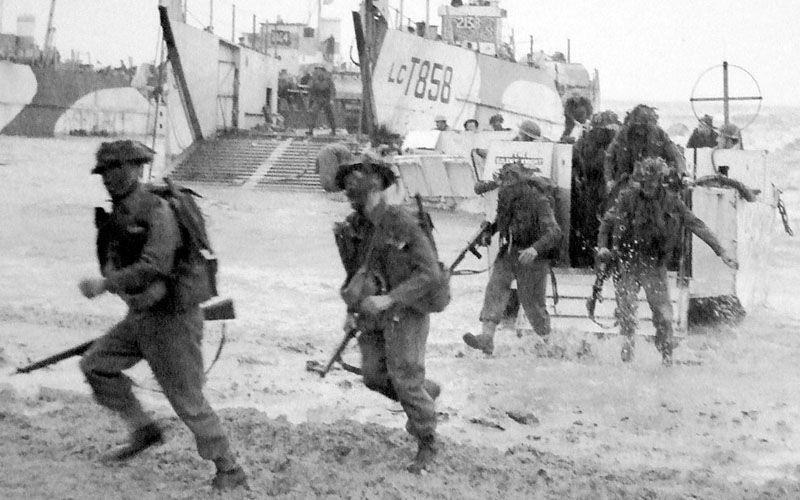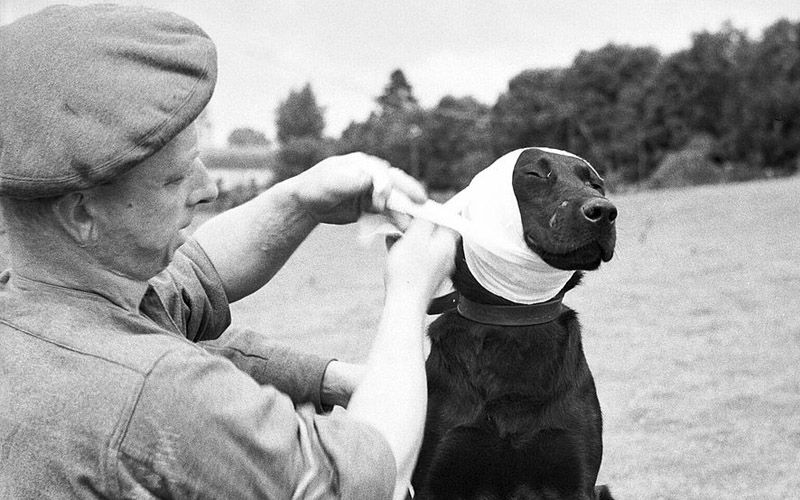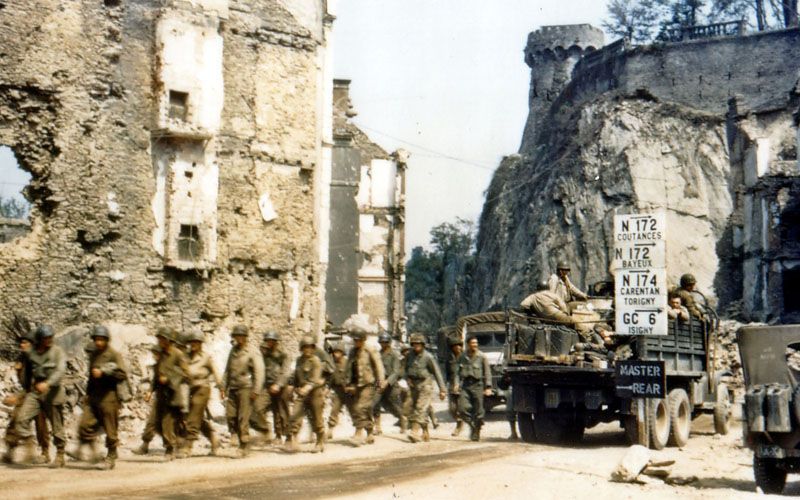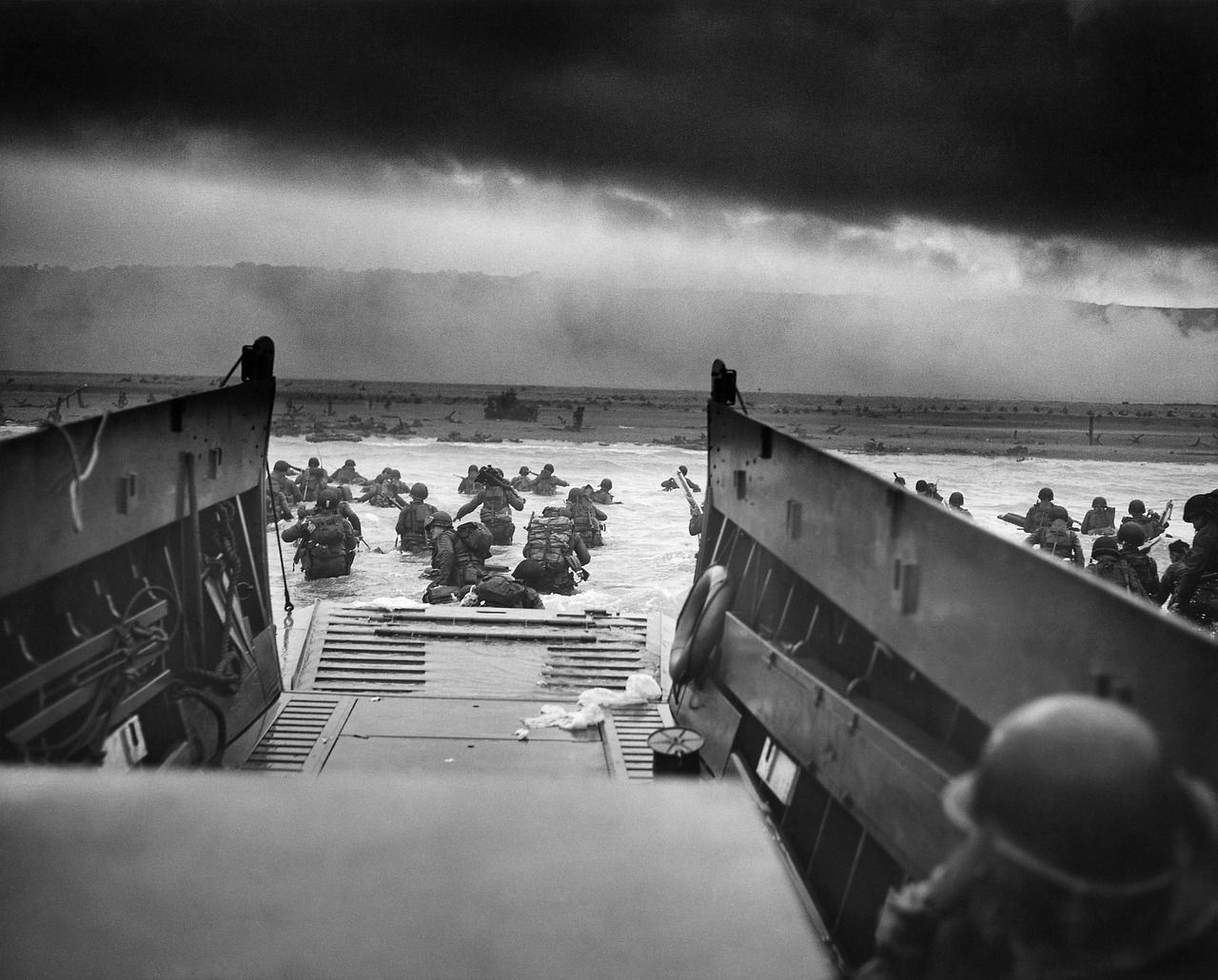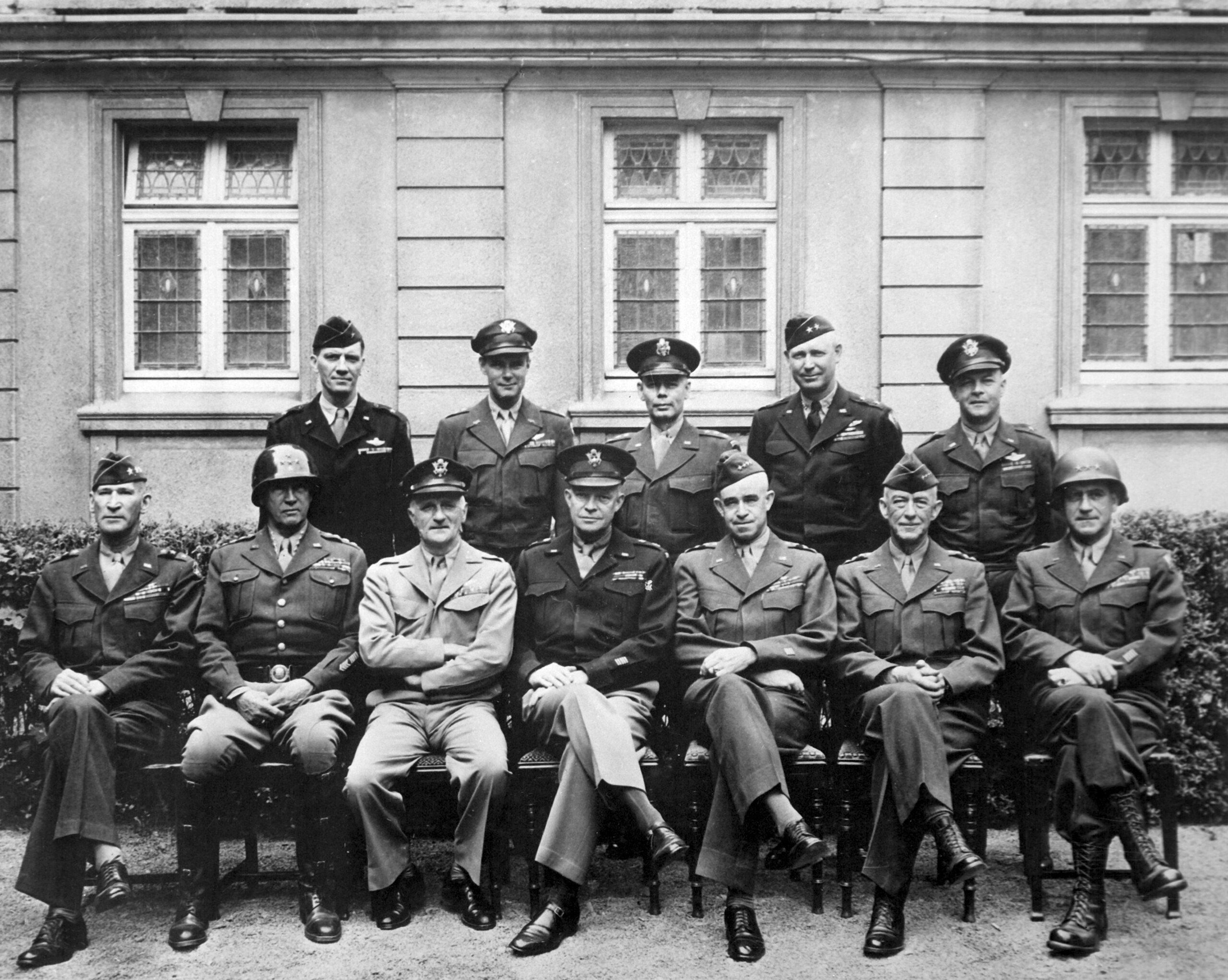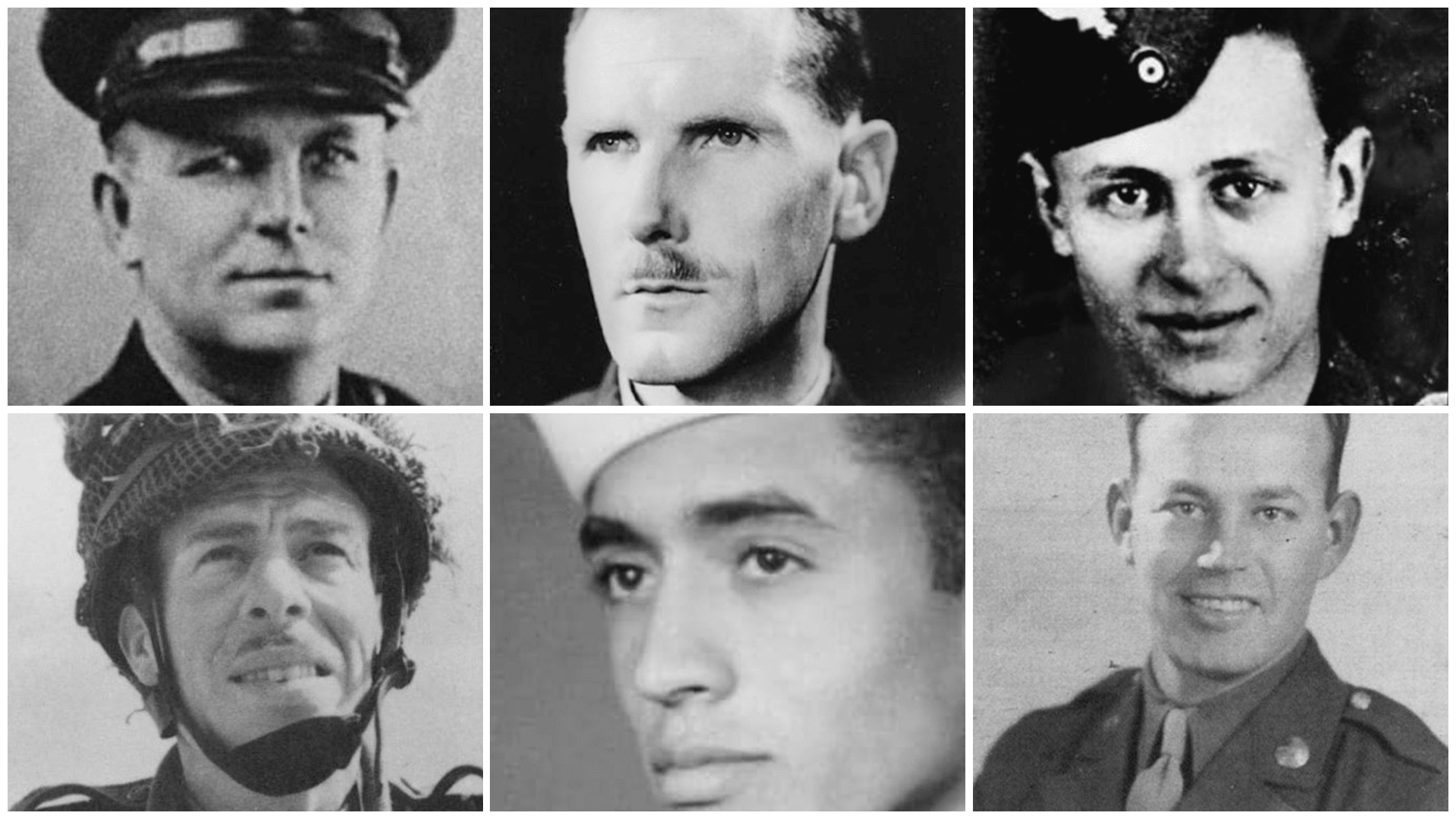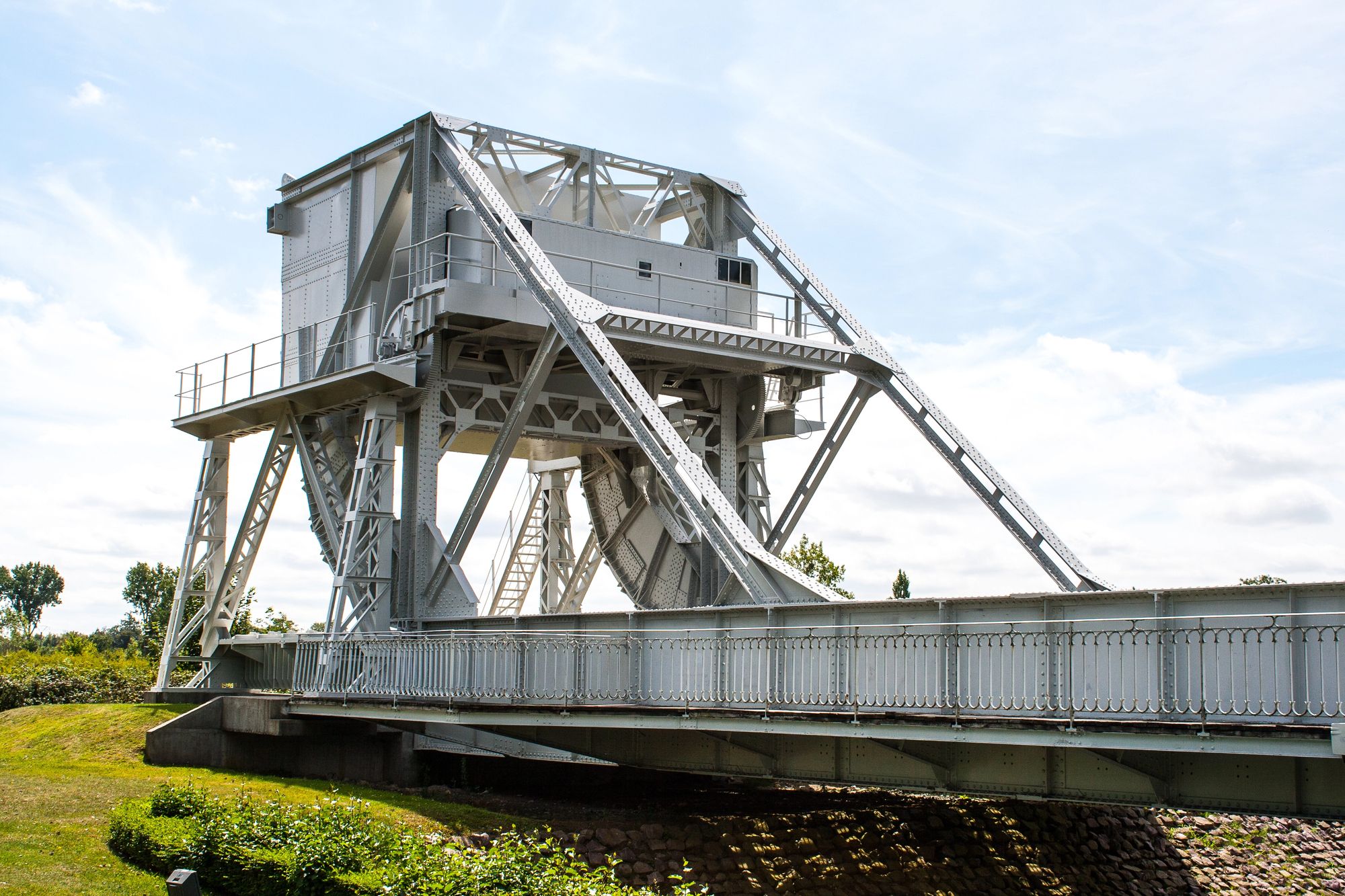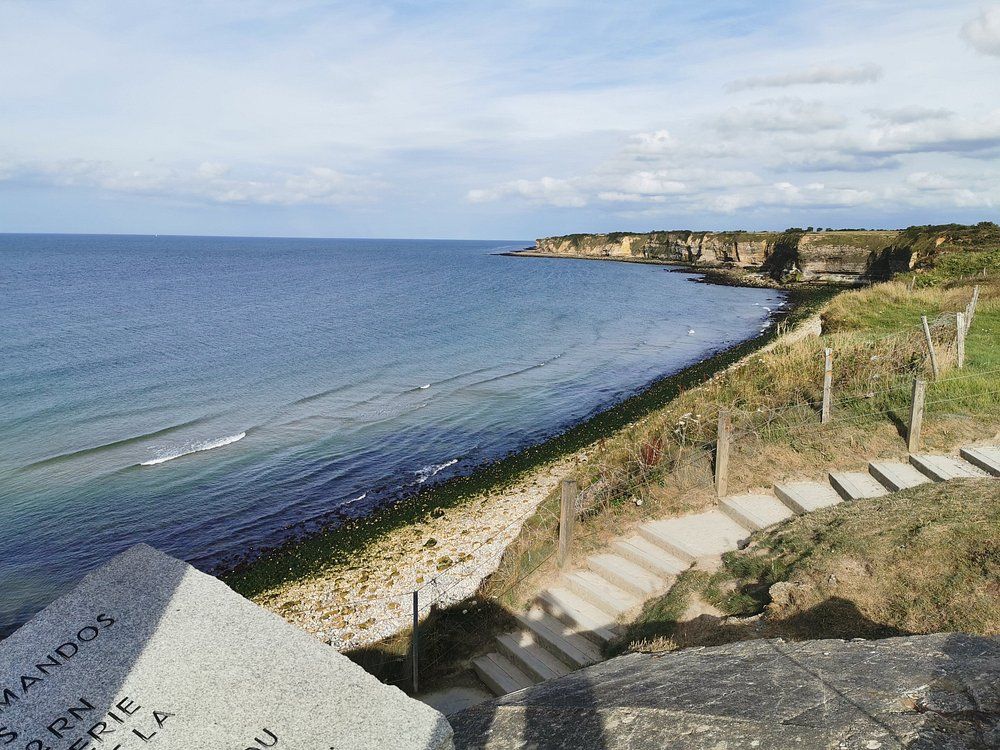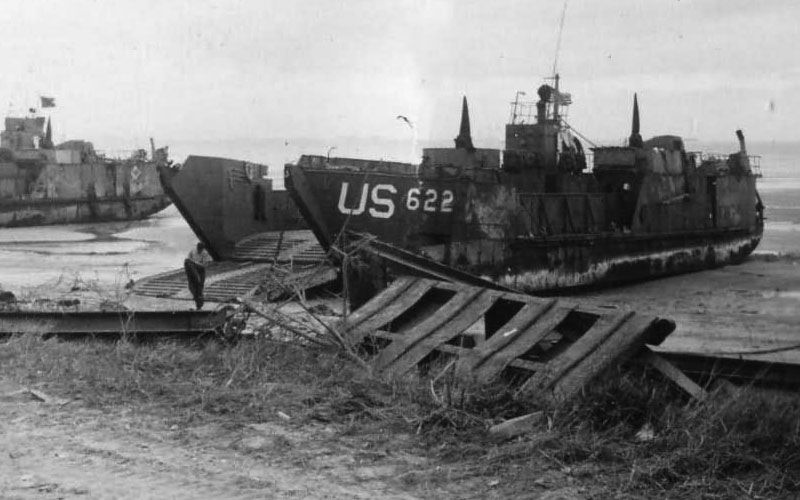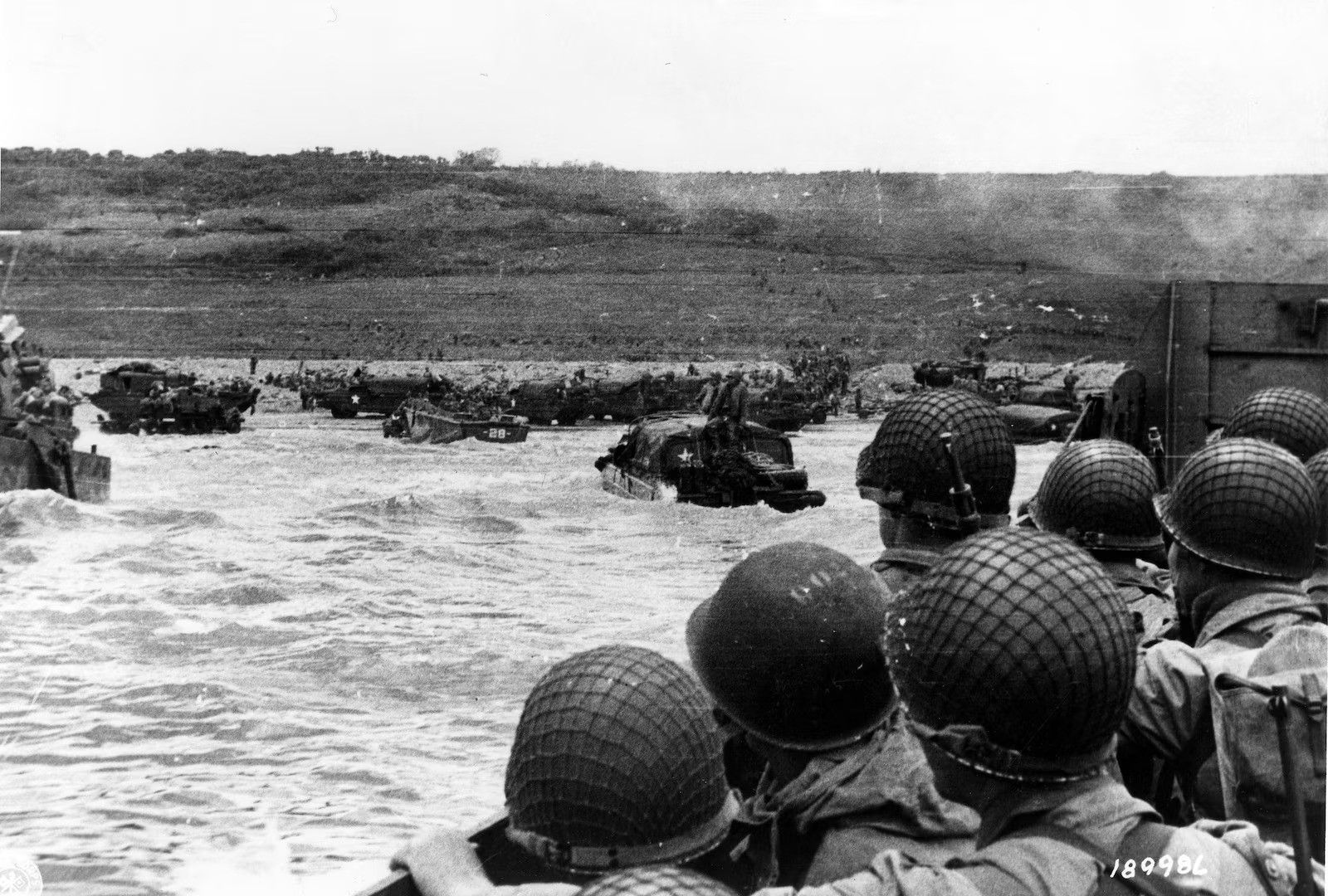The Normandy landings of June 6, 1944, relied on a complex military infrastructure that developed its own specialized vocabulary—terms that sometimes confuse even dedicated history enthusiasts. This comprehensive glossary demystifies D-Day’s distinctive terminology, from military equipment designations to operational code names, providing crucial context for understanding firsthand accounts and historical documents.
Whether you’re examining beach sector classifications like “Omaha” and “Gold,” deciphering references to specialized vehicles like the DUKW amphibious truck, or understanding the differences between various landing craft variants like LCAs and LCMs, this resource offers clear explanations of the language that shaped how Operation Overlord was planned, executed, and later documented. By unlocking these specialized terms, we gain deeper insight into both the technical challenges and human experiences of this pivotal World War II campaign that marked the beginning of Nazi Germany’s defeat in Western Europe.
ACCUMULATOR (Operation Accumulator)
Codename for an Allied naval operation near the Channel Islands on the night of 12th/13th June, as part of the larger FORTITUDE deception operation. Intended to simulate a follow-up landing force heading for Granville on the western coast of the Cotentin Peninsula, the operation was a failure. The plan was for two Royal Canadian Navy destroyers, Haida and Huron, to make a series of fake radio transmissions, which would be intercepted. The beginning of the operation went smoothly, with the two ships signaling that the invasion fleet had been delayed by engine problems, and giving a revised plan.
However, the radios on the Haida broke down, forcing the Huron to continue alone; the two ships were also spotted by an Allied reconnaissance plane, which radioed back that it had found “unidentified warships”. The desired effect would be to force the German command to pull units from the front line and redeploy them to protect the western coast, however, no German troop movements in response to the operation were made.
ALBANY (Mission Albany)
Codename for the main parachute assault by the 101st Airborne Division on D-Day, under the command of General Maxwell D. Taylor. Around 6,928 paratroopers made their jumps from 443 C-47 Skytrain aircraft. The assault preceded “Mission Boston” (the dropping of the 82nd Airborne Division) by one hour. The main combat jumps were preceded at each of the three drop zone by teams of pathfinders that arrived thirty minutes before the main assault. Their mission was to erect navigation aids, including Eureka radar transponder beacons and marker lights, to aid the C-47s in locating the DZs in the dark.
ANVILL (Operation Anvil)
The original name given to the Allied landings in Southern France in August 1944. The name was later changed to Operation Dragoon.
AQUATINT (Operation Aquatint)
Operation Aquatint was the name given to a September 1942 raid by British Commandos on the coast of occupied France, in the area of Sainte-Honorine-des-Pertes – later to become Dog Sector at Omaha Beach. The raid was carried out by No. 62 Commando, also known as the Small Scale Raiding Force. The mission was to collect information about the surrounding area, and take a German guard prisoner. The operation was a failure and all of the Commandos were either killed or captured.
ASPARAGUS
See “Rommel’s Asparagus”.
ATLANTIC (Operation Atlantic)
Codename for the main parachute assault by the 101st Airborne Division on D-Day, under the command of General Maxwell D. Taylor. Around 6,928 paratroopers made their jumps from 443 C-47 Skytrain aircraft. The assault preceded “Mission Boston” (the dropping of the 82nd Airborne Division) by one hour. The main combat jumps were preceded at each of the three drop zone by teams of pathfinders that arrived thirty minutes before the main assault. Their mission was to erect navigation aids, including Eureka radar transponder beacons and marker lights, to aid the C-47s in locating the DZs in the dark.
ATLANTIC WALL
Between 1942 and 1944 the German Organisation Todt contructed a chain of fortifications which stretched between Norway in the north and French border with Spain in the south. The yellow-marked section on the map to the right shows the scale of the undertaking. The German Atlantic Wall: 1942-1944 Hitler ordered the construction of an “Atlantic Wall” which comprised of minefields, gun emplacements, trench networks and ‘resistance nests’. By D-Day, the Germans had laid almost six million mines in Northern France. More gun emplacements and minefields extended inland along roads leading away from the beaches. In likely landing spots for gliders and parachutists, the Germans emplanted slanted poles with sharpened tops (see ‘Rommel’s Asparagus’). The Channel Islands were particularly heavily defended, and some of the best surviving examples of Atlantic Wall fortifications can be visited on the Islands.
BAND
Codename for a landing area east of the Orne River, of which little detail seems to be known, except that it was not used during the landings.
BEETLE
Beetles were pontoons that supported the “Whale” piers in the Mulberry harbors. They were moored in position using wires attached to “Kite” anchors. These anchors had such high holding power that very few could be recovered at the end of the War. The Navy was dismissive of the designer’s claims for the anchor’s holding ability so Kite anchors were not used for mooring the Bombardons. The only known surviving Kite anchor is displayed in a private museum at Vierville-sur-Mer although a full size replica forms part of a memorial to the designer, Alan Beckett in Arromanches. The kite anchor design later became the popular plough anchor currently in use by sailors all over the world.
BELGIAN GATE
Part of the German beach defenses, they were metal structures resembling large gates ten feet high and on rollers. Teller mines were attached to the top.
BENEFICIARY (Operation Beneficiary)
Proposed airborne and amphibious operation for June or July 1944 to take St Malo.
BIG DRUM (Operation Big Drum)
Big Drum was the codename for an Allied naval deception operation. Task Force C consisted of four HDMLs, whose job was to operate as a distraction on the western flank of the invasion. The plan originally called for the task force, which was attached to Force U (the westernmost convoy of the invasion fleet), to operate radar jamming equipment as it approached the French coast, holding 2 miles (3.2 km) off shore until first light. After the Germans failed to respond, the ships moved to within 1.5 miles (2.4 km) of the coast. No response, either in the air or on the shore, was observed, and the convoy returned safely to Newhaven.
BIGOT
The highest level of security clearance reserved for those personnel privy to the details of Operation Overlord. Those with such clearance were deemed to be “Bigoted”. The term “BIGOT” can be seen on many documents relating to the invasion.
BLUECOAT (Operation Bluecoat)
The British attack towards Aunay-sur-Odon, 30th July 1944.
BOCAGE
The thick, banked hedgerows in the Normandy countryside. Fighting in the bocage was extremely difficult. Metal “tusks” were even welded to the front of some tanks to help improve battlefield mobility (see “Rhino”).
BODYGUARD (Operation Bodyguard)
Codename for cover and deception plans for Allied strategy in Europe.
BOLERO (Operation Bolero)
Codename for the build-up of American forces in Britain, which began in April 1942.
BOMBARDONS
Floating steel component of breakwaters to seaward of the Mulberry harbors. These were designed by the Royal Navy who insisted on being involved in the Mulberry operation as it was a port and therefore nautical. During the great storm of late June, many of these bombardons broke loose and caused severe damaged to the harbors – possibly more so than the storm itself.
BOMBE
Developed by code-breakers in Poland, these electromagnetic cryptanalytical machines were first used in 1940 to decode German Enigma-encrypted transmissions. The British developed their own machines which were used to great effect at Bletchley Park and other country house locations to decode enemy communications. By 1944 there were 200 bombes of five different types. The were two meters wide by two meters high, the machines generated so much heat that in the summer some operators stripped to their underwear.
BOSTON (Mission Boston)
Codename for the main parachute assault by the 82nd Airborne Division on D-Day. Around 6,420 paratroopers made their jumps from almost 370 C-47 Skytrain aircraft. The assault followed “Mission Albany” (the dropping of the 101st Airborne Division) by one hour. The 82nd Airborne Division divided itself into three forces for its role on D-Day. Force A (parachute) consisted of three parachute infantry regiments and support detachments, commanded by Assistant Division Commander Brigadier General. James Gavin; Force B (glider): the glider infantry regiment and artillery battalions, and airborne support elements, commanded by Division Commander Major General Matthew B. Ridgway; and Force C (seaborne): remaining combat elements, division support troops and attached units including tanks, landing at Utah Beach, commanded by Assistant Division Commander Brigadier General George P. Howell.
BOXER (Operation Boxer)
Proposed airborne operation in August 1944 to take Boulogne.
CHAIN HOME
Chain Home of “CH” for short was the codename for the network of coastal early warning radar stations built by the British before and during the war.
CHARNWOOD (Operation Charnwood)
The British and Canadian attack on Caen, 8th July 1944.
CHASTITY (Operation Chastity)
CHICAGO (Mission Chicago)
Originally planned to be the main assault of the 101st Airborne Division on D-Day, Mission Chicago was a pre-dawn glider-borne assault on 6th June and was in effect the first reinforcement mission after the main parachute assault (see “Albany”). Chicago was primarily an artillery reinforcement mission. Aboard 44 gliders were Batteries A and B of the 81st Airborne Antiaircraft Battalion. The other 8 gliders carried small elements of the 326th Airborne Engineer Battalion, the 101st Signal Company, the antitank platoon of the 327th Glider Infantry Regiment, and a surgical team of the 326th Airborne Medical Company. Also accompanying the glider serial in a last-minute change was the assistant division commander, Brigadier General Don F. Pratt, who had been designated to command the seaborne echelon.
COBRA (Operation Cobra)
The American breakout near St-Lo, 25th-29th July 1944.
COLOSSUS
The first programmable electronic computer. Developed by British code-breakers, they were used to help decrypt the almost 5,000 German intercepts received per day.
CONUDRUM
Used to unwind the HAMEL pipeline (see “PLUTO”), the conun drum (renamed HMS Conundrum by the Royal Navy) was a floating bobbin some 30 feet in diameter and weighing 1,600 tons. It was towed across the channel by two tugs to deploy the subsea pipeline from Lepe and Cowed in England to Fort de Querqueville in Cherbourg.
CORN COBS
The name given to the obsolete ships that were sunk to provide a breakwater (see “Gooseberry”) at each of the five invasion beaches.
COSSAC
Chief of Staff Supreme Allied Command – Lieutenant-General Sir Frederick Morgan was appointed to this role at the Casablanca Conference to draw up draft plans for Operation Roundup, which would eventually evolve in the Overlord plan.
D-DAY
Standard military terminology to denote the day on which an exercise or operation will begin. D Plus/D+ and D Minus/D- are used to denote periods in time before or after the specified “day” (i.e. D+14 is two weeks after the start of an operation). The term was noted by Time Magazine’s June 12 1944 edition as first being used in Field Order No. 8, of the First Army, A.E.F., issued on 20th September, 1918, which read, “The First Army will attack at H-Hour on D-Day with the object of forcing the evacuation of the St. Mihiel salient.” The term “D-Day” is still used today. See “H-Hour”.
DEADSTICK (Operation Deadstick)
The codename for the British gliderborne/airborne operation during the early hours of D-Day. The mission’s objective was to capture intact two road bridges across the River Orne and the Caen Canal providing the only exit eastwards for British forces from their landing at Sword Beach. Intelligence reports said both bridges were heavily defended by the Germans and wired for demolition. Once captured, the bridges had to be held against any counter-attack until the assault force was relieved by commandos and infantry advancing from the British landing zone.
DEER (Operation Deer)
See “Frog”.
DETROIT (Mission Detroit)
Mission Detroit was a glider-borne assault in the area around Sainte-Mère-Église before dawn on 6th June. It was originally designed to be the main assault for the 82nd airborne, but through the evolution of planning for Overlord Mission Detroit became the first reinforcement mission for the 82nd after the main combat assault. Departing from Ramsbury, C-47 tow aircraft of the 437th Troop Carrier Group delivered 52 CG-4A gliders carrying Batteries A and B of the 82nd Airborne Anti-Aircraft Battalion, part of the divisional staff and a signal detachment. In addition to the 220 personnel were 22 jeeps, 5 trailers, 16 57mm antitank guns and 10 tons of other equipment.
DONALD DUCK / DD
Nickname given to the “DD” or “Duplex Drive” amphibious tanks.
DRAGOON (Operation Dragoon)
Final name for Allied invasion of southern France. See “Anvill”.
DUKW
GMC’s ironic designation for the amphibious 2.5 ton 6×6 vehicle based on the CCKW truck. Around 2,000 of these were deployed in Normandy between D-Day and D+60.
ELMIRA (Mission Elmira)
Mission Elmira was the designation given to the final assault of D-Day and was tasked with the reinforcement the 82nd Airborne Division on the Cotentin Peninsula. Elmira was a gliderborne deployment of some 1,174 men, 123 vehicles, 37 artillery pieces, 59 tons of ammunition and 72 tons of other supplies and equipment. It consisted of two waves of Waco and Horsa gliders towed by a total of 176 C-47 Skytrain aircraft destined for LZs ‘W’ and ‘O’. A similar but much smaller operation to reinforce the 101st Airborne was known as KEOKUK. Mission Elmira was named after the site in New York where early glider training was conducted.
ENIGMA
Resembling a typewriter, by 1935 all German military forces had adopted the Enigma encryption device. Despite the Germans believing the Enigma codes to be unbreakable, the Poles were the first to crack them in 1932 with help from a German Army cypher operative.
ENTHRONE (Operation Enthrone)
Name of the operation carried out by motor launches of the Royal Navy’s Coastal Force just before D-Day. Their job was to lay ten FH-830 acoustic beacons on the seabed at the positions where minesweepers would begin to clear a path through the German minefields off the invasion beaches. The beacons, designed by George Whalley, were battery powered and came into operation on a timer.
EPSOM (Operation Epsom)
Also known as the First Battle of Odon, Epsom was the operation of Second Army to cross the Odon and Orne rivers southwest of Caen, 26th June – 1st July 1944.
ETF
Eastern Task Force.
EUREKA
The Eureka/Rebecca transponding radar was a short-range radio navigation system used for the dropping of airborne forces and their supplies. It consisted of two parts, the Rebecca airborne transceiver and antenna system, and the Eureka ground-based transponder. Rebecca calculated the range to the Eureka based on the timing of the return signals, and its relative position using a highly directional antenna.
EXPRESS (Operation Express)
An operation on 22nd July 1944 involving British and Canadian units to the south west of Caen around the area of Louvigny.
FABIUS (Exercise Fabius)
Exercise Fabius was the largest amphibious training exercise of the war, and took place a week after the ill-fated Exercise Tiger. Fabius began on 3rd May, a day late due to bad weather, and comprised six elements and closely resembled the plan of Operation Neptune. Fabius 1 involved elements of the 1st and 29th Infantry Divisions at Slapton Sands ni Devon. Fabius 2 involved elements of the British 50th Infantry Division at Hayling Island near Portsmouth. Fabius 3 saw the 3rd Canadian Infantry Division practice landings at Bracklesham Bay, whilst the British 3rd Infantry Division and associated units practiced landing at Littlehampton. American and British forces training on build-up of forces and supplies on the beachhead comprised Fabius 5 and Fabius 6.
FORTITUDE (Operation Fortitude)
The complex deception plan to provide cover for Operation Overlord.
FROG (Operation Frog)
The codename for a planned Royal Marines operation during the early hours of D+1 against the German battery at Benerville. The designated force was alternatively to attack the battery at Houlgate (Operation Deer). Neither operation took place. Click here for original operation documents.
FUNNIES
Major General Percy Hobart was a bit of an eccentric and outcast within British Army circles, however, he developed a series of ingenious adaptations and inventions which assisted the Allies in Normandy Landings. These included tanks that could destroy minefields and barbed wire defenses, cross large ditches or even lay their own flexible roadway to cross soft sand. These inventions were dubbed “Hobart’s Funnies“.
FUSAG
The “First United States Army Group” was a fictitious Allied Army Group activated in 1943 as part of Operation Quicksilver. It was created to deceive the Germans over where the Allies would land in France. To attract Axis attention, prominent US general George S. Patton was placed in command of the fabricated formation.
GALVESTON (Mission Galveston)
Codename for the glider landing operation on the morning of D+1 to deliver elements of the 82nd Airborne. Two serials of fifty gliders each were employed destined for LZ E. The first serial consisted of 32 Waco gliders and 18 Horsas which took off from Ramsbury. The second serial had 50 Wacos which departed from Aldermaston.
GAMBIT (Operation Gambit)
Codename for operation involving two midget submarines, or X-Craft, who would guide the British and Canadian assaults by a combination of echo-sounder, radio beacon and an 18ft telescopic mast with a seaward facing light. The craft – X-20 and X-23 – had sat submerged close to the Normandy coastline since 4th June.
GLIMMER (Operation Glimmer)
Codename given to the deception operation carried out to make the Germans think an invasion force was heading towards the Boulogne area of the Pas de Calais. It involved aircraft of No. 218 Squadron dropping “window”, along with a force of six Royal Navy motor launches to simulate an invasion force.
GOLD (Gold Beach)
Codename given to the westernmost British invasion beach between Le Hamel and Ver-sur-Mer. It was divided into two sector named Jig and King each 1.5 miles long. The Gold Beach was assaulted by the 50th Northumbrian Division at 0725hrs.
GOODWOOD (Operation Goodwood)
Second Army’s attack southeast of Caen, 18-21st July 1944.
GOOSEBERRY
The codename given to the sheltered breakwaters off each of the invasion beaches to assist the operations of smaller craft such as DUKWs shuttling supplies ashore. They were created by the scuttling of 72 old vessels (see “Corn Cobs”). At two of the beaches (Omaha and Gold) the breakwaters were enhanced by Phoenix caissons as part of the artificial harbor construction.
GREENLINE (Operation Greenline)
Greenline took place between 15th and 16th July around the town of le Bon Repos and Hill 112.
H-HOUR
Standard military terminology to denote the hour at which an exercise or operation will begin. H Plus/H+ and H Minus/H- are used to denote periods in time before or after the specified “hour” (i.e. H+6 is six hours after the start of an operation). By extension, H+75 minutes is used for H-Hour plus 1 hour and 15 minutes. The term was noted by Time Magazine’s June 12 1944 edition as first being used in Field Order No. 8, of the First Army, A.E.F., issued on 20th September, 1918, which read, “The First Army will attack at H-Hour on D-Day with the object of forcing the evacuation of the St. Mihiel salient.” The term “H-Hour” is still used today. See “D-Day”.
HACKENSACK (Mission Hackensack)
Mission HACKENSACK was a follow up glider landing on 7th June in the area Landing Zone W (LZW) near Sainte-Mère-Église. Tow aircraft from 439th and 441st Troop Carrier Groups took off from Upottery Airfield and Merryfield Airfield respectively, with a total of 70 Waco CG4-A and 30 Horsa gliders. As well as vehicles, ammunition and supplies, the gliders landed men of the 325th Glider Infantry Regiment (GIR) and most of the 2nd Battalion 401st GIR, which was attached to the 325th and acted as its 3rd battalion.
HALCYON
HALCYON was a code-word established in 1944 to refer to D-Day, although not to a specific date. For example, an encrypted signal sent from General Eisenhower’s Headquarters on 23rd May 1944, once deciphered, reads “Exercise Hornpipe Bigot Halcyon Y plus four”. See “HORNPIPE” and “Y” to translate the code.
HAMILCAR
A 68-foot long glider that could carry an 8 ton payload – including a Tetrarch tank. Only the Halifax bomber was sufficient to act as tug for the Hamilcar glider. Upon landing the nose would hinge upwards and the glider would top forwards so cargo could be unloaded without the need for a ramp.
HANDS-UP (Operation Hands-Up)
Planned attack on the Quiberon Bay area of Brittany in support of ‘Operation Chastity’. Neither operation actually took place.
HEDGEHOG
Obstacles resembling a children’s “jack” toy, hidden by high tides and composed of three metal beams welded together. They were designed to damage the underside of landing craft.
HIGGINS BOAT
Higgins Industries, owned by Andrew Higgins, designed and built the amphibious landing craft referred to as LCVP (Landing Craft, Vehicle, Personnel). In 1964, Dwight D. Eisenhower said to historian Stephen Ambrose: “[Andrew Higgins] is the man who won the war for us. If Higgins had not designed and built those landing craft, we never would have landed over an open beach. The whole strategy of the war would have been different.”. Higgins also manufactured PT boats, and produced the first American airborne lifeboat, the model A-1 lifeboat.
HOBART’S FUNNIES
Hobart’s Funnies: Specialty tanks developed by Gen. Percy Hobart of the 79th Armored Division. They included duplex-drive tanks, or DDs, that were fitted with propellers and air-filled canvas screens around their hulls so they could float. “The Crab” had a rotating drum and chain flails that could beat a path through a mine field; another tank carried a 40-foot bridge that could be unfolded across antitank ditches. Carpet-laying tanks unrolled matting over the sand for a roadway.
HORNPIPE (Exercise Hornpipe)
“Exercise Hornpipe” was a code-word established in 1944 to refer to OVERLORD.
HORSA
Manufactured by Airspeed Ltd, the Horsa was a British troop-carrying glider which first entered service in 1941. The United States Army Air Forces (USAAF) acquired approximately 400 Horsas in a form of “reverse” Lend-Lease. Due to low surplus prices in the UK, many were bought and converted to travel trailers and vacation cottages after the war. On 5 June 2004, as part of the 60th anniversary commemoration of D-Day, Prince Charles unveiled a replica Horsa near the site of the landing at Pegasus Bridge.
JEDBURGH (Operation Jedburgh)
Operation Jedburgh was a clandestine operation during the war, in which personnel of the British Special Operations Executive, the U.S. Office of Strategic Services, the Free French Bureau Central de Renseignements et d’Action (“Intelligence and operations central bureau”) and the Dutch and Belgian Armies were dropped by parachute into Nazi-occupied France, Holland and Belgium to conduct sabotage and guerrilla warfare, and to lead the local resistance forces in actions against the Germans. Jedburgh teams consisted of three men: a commander, an executive officer, and a non-commissioned radio operator. One of the officers would be British or American while the other would originate from the country to which the team deployed.
JUBILEE (Operation Jubilee)
The Dieppe Raid, also known as the Battle of Dieppe, Operation Rutter and, later, Operation Jubilee, was an Allied attack on the German-occupied port of Dieppe on 19th August 1942. After just six hours the Allied commanders were forced to abandon the landings. It involved 5,000 Canadians, 1,000 British troops, and 50 United States Rangers. Although a disaster, valuable lessons were learned for Operation Overlord. Without the raid on Dieppe, D-Day could have gone very differently.
JUNO (Juno Beach)
Juno Beach spanned from Courseulles-sur-Mer, a village just east of the British beach Gold, to Saint-Aubin-sur-Mer, just west of the British beach Sword. The Juno landings were judged necessary to provide flanking support to the British drive on Caen from Sword, as well as to capture the German airfield at Carpiquet west of Caen.
JUPITER (Operation Jupiter)
Part of the Battle for Caen, Jupiter was an offensive launched by VIII Corps of the British Second Army on 10th July 1944.
KEOKUK (Mission Keokuk)
Mission Keokuk was the name given to the first daylight glider operation on D-Day, arriving over LZ ‘E’ just before 2100hrs. It was designed to reinforce the 101st Airborne, and some 32 C-47 Skytrain aircraft delivered Horsa gliders carrying 157 medical, signal and staff personnel, plus 40 vehicles, 6 anti-tank guns and 19 tons of other supplies and equipment. A similar but much larger operation was carried out to reinforce the 82nd Airborne. See ‘Mission Elmira’.
LBE
Landing Barge, Emergency Repair
LBF
Landing Barge, Flak
LBK
Landing Barge, Kitchen
LBO
Landing Barge, Oiler
LBW
Landing Barge, Water
LBV
Landing Barge, Vehicle
LCA
Landing Craft, Assault
LCA(HR)
Landing Craft, Assault (Hedgerow)
LCC
Landing Craft, Control
LCE
Landing Craft, Emergency Repair
LCF
Landing Craft, Flak
LCG
Landing Craft, Gun
LCH
Landing Craft, Headquarters
LCI
Landing Craft, Infantry
LCM
Landing Craft, Mechanized
LCN
Landing Craft, Navigational
LCP
Landing Craft, Personnel
LCP(N)
Landing Craft, Personnel (Nested)
LCP(R)
Landing Craft, Personnel (Ramped)
LCP(SY)
Landing Craft, Personnel (Survey)
LCP(U)
Landing Craft, Personnel (Utility)
LCR
Landing Craft, Rubber
LCS
Landing Craft, Support
LCS(R)
Landing Craft, Support (Rocket)
LCT
Landing Craft, Tank
LCT(A)
Landing Craft, Tank (Armored)
LCT(R)
Landing Craft, Tank (Rocket)
LCVP
Landing Craft, Vehicle Personnel (see “Higgin’s Boat”)
LSB
Landing Shift, Bombardment
LSC
Landing Ship, Carrier (Derrick-Hoisting)
LSD
Landing Ship, Dock
LSE
Landing Ship, Emergency Repair
LSF
Landing Ship, Fighter Direction
LSG
Landing Ship, Gantry
LSH
Landing Ship, Headquarters
LSI
Landing Ship, Infantry
LSI(H)
Landing Ship, Infantry (Hand-Hoisting)
LSM
Landing Ship, Medium
LSP
Landing Ship, Personnel
LSS
Landing Ship, Stern-Chute
LST
Landing Ship, Tank
LSV
Landing Ship, Vehicle
LVT
Landing Vehicle, Tracked
LVT(A)
Landing Vehicle, Tracked (Armored)
LÜTTICH (Operation Lüttich)
German counterattack at Mortain, 7th August 1944.
MALLARD (Operation Mallard)
Daytime operation during the afternoon of D-Day to deliver troops to reinforce those landed during OPERATION TONGA during the night. The Glider Pilot Regiment and 6th Airborne Division were involved.
MANDREL (Operation Mandrel)
Between Littlehampton and Portland Bill, aircraft using the Mandrel EW jammers set up a jamming screen to try and hide the real invasion fleet from German radar.
MD1
Ministry of Defense 1 / MD1 was also known as “Churchill’s Toyshop”, and was a British weapon research and development organization responsible for numerous covert and front-line weapons, including the PIAT anti-tank weapon, sticky bomb and limpet mine.
MGB
Motor Gun Boat
MOONSHINE (Operation Moonshine)
Codename for a deception operation off France’s northern coast involving six Royal Navy gunboats carrying special electronic equipment that could respond to German “Freya” radar signals by multiplying and reflecting their pulse. The small flotilla of six torpedo boats suddenly appeared to German radar as six large invasion fleets heading towards Boulogne.
MTB
Motor Torpedo Boat
MULBERRY
The codename for the artificial harbors constructed of Omaha Beach (Mulberry A) and Gold Beach (Mulberry B). Each harbor was roughly the size of Dover harbor in Kent. The “Mulberry” harbors consisted of a floating outer breakwater called “Bombardons”, a static breakwater consisting of “Gooseberries” and reinforced concrete caissons called “Phoenix”, floating piers or roadways code named “Whale” and pier heads code named “Spuds”.
NEPTUNE (Operation Neptune)
The codename for the Channel-crossing phase of Operation Overlord, encompassing not only the assault phase (both airborne and amphibious elements), but also the establishment of the MULBERRY harbors and PLUTO (Pipelines Under The Ocean). Operation Neptune officially ended on 3rd July 1944 on the withdrawal of Rear Admiral A.G. Kirk Commander WTF.
OMAHA (Omaha Beach)
Omaha Beach was 8km long, from east of Sainte-Honorine-des-Pertes to west of Vierville-sur-Mer on the right bank of the Douve River estuary. Landings here were necessary in order to link up the British landings to the east at Gold with the American landing to the west at Utah.
OSCAR
Nickname for American para-dummy. See also “Rupert”.
OSS
The Office of Strategic Services (OSS) was a United States intelligence agency formed in June 1942. It was the wartime intelligence agency, and it was a predecessor of the Central Intelligence Agency (CIA). The OSS was formed in order to coordinate espionage activities behind enemy lines for the branches of the United States Armed Forces. At its peak it has around 13,000 employees. It was dissolved in September 1945.
OVERLORD (Operation Overlord)
Codename of the Allied invasion of Europe, commencing with Operation Neptune to land forces in Normandy.
PADDLE (Operation Paddle)
Operation Paddle was an offensive engagement by the 1st Canadian Parachute Battalion in the area east of the Orne River. It commenced on 17th August 1944.
PERCH (Operation Perch)
Operation Perch was a British offensive which took place from 7th and 14th June 1944 with the intention to encircle and seize Caen. It was to begin immediately after the British beach landings with an advance to the south-east of Caen by XXX Corps.
PHOENIX
Reinforced concrete caissons constructed by civil engineering contractors around the coast of Britain, collected and sunk at Dungeness, the Cant and Pagham. The engineers were unable to refloat the Phoenixes and US Navy Captain (later Rear Admiral) Edward Ellsberg, already well known for quickly refloating scuttled ships at Massawa and Oran, was brought in to accomplish the task, though not without obtaining Churchill’s intervention in taking the task away from the Royal Engineers and giving it to the Royal Navy. The Phoenixes, once refloated, were towed across the channel to form the “Mulberry” harbor breakwaters together with the “Gooseberry” block ships. Ellsberg rode one of the concrete caissons to Normandy; once there he helped unsnarl wrecked landing craft and vehicles on the beach.
PIAT
Projector, Infantry, Anti-Tank. A hand-held anti-tank weapon based on the spigot mortar that launched a 2.5lb (1.1 kg) bomb using a powerful spring and a cartridge on the tail of the projectile. It used a shaped charge to penetrate armor.
PICCADILLY CIRCUS
“Piccadilly Circus” was the codename given to the area of English Channel south of the Isle of Wight which was designated at the rendezvous point for the vessels taking part in Operation Neptune (the amphibious element of Overlord).
PLUTO
PLUTO was the acronym for the “Pipeline Under The Ocean”. Ancient armies may have marched on their stomachs, but in modern warfare armies can do little with fuel. The invasion forces would require a massive amount of fuel and pipelines were considered essential to the success of the campaign. British scientists worked with oil companies to develop PLUTO. Pipelines were laid across the channel and fuel pumped across from pumping stations in England. One of these, at Sandown on the Isle of Wight, was disguised as an ice cream shop. After the war 90% of the pipeline were recovered and scrapped.
POMEGRANATE (Operation Pomegranate)
Operation Pomegranate took place on 16th – 17th July 1944 and formed part of the engagement known as the Second Battle of the Odon. Operations Pomegranate (and Operation Greenline) were intended to draw German attention away from the upcoming assault from the Orne bridgehead, codenamed Operation Goodwood.
PORPOISE
The name given to metal, watertight ammunition sledges which were designed to be towed behind a tank or self-propelled gun. Produced in two sizes, they were designed to fit between the tracks of the various armored vehicles they were to be used with, and in such a way that it could be stowed beneath the vehicles whilst they were on board the landing craft. An example of a “Porpoise” can be seen next to the Sexton self-propelled gun at Gray-sur-Mer.
QUICKSILVER (Operation Quicksilver)
Operation Quicksilver was a Second World War military deception. Undertaken by the Allies in 1944, the operation threatened an invasion of France in the Pas de Calais region through the simulation of a large Field Army in South East England. Quicksilver formed part of the Operation Fortitude deception, itself part of the strategic Operation Bodyguard plan. The key element of Quicksilver was the creation in German minds that “First United States Army Group” (FUSAG) commanded by General George Patton supposedly would land in the Pas-de-Calais for the major invasion of Europe, after the landings in Normandy had lured the German defenders to that front. FUSAG was a genuine army group headquarters which later became Omar Bradley’s 12th Army Group, but was given a fictitious role and many non-existent divisions for purposes of deception.
REBECCA
See “Eureka”.
REINFORCEMENT (Operation Reinforcement)
Operation Reinforcement was a planned airborne landing of the British 1st Airborne Division in the area to the west of St Sauver-le-Vicomte in order to support the American 82nd Airborne Division. The operation was never carried out.
RHINO
(1) Also known as Navy Lightered (NL) pontoons, the Rhino Ferry was a 200ft long floating barge that could be powered by large outboard motors. Comprised of watertight steel “blisters” in could approach the bow of a LST or similar vessel and receive vehicles onto its deck before returning them to shore. The large concrete and steel relic on the beach at Arromanches is not, as many believe, a Rhino Ferry – rather in intermediate dumb pontoon.
(2) American nickname for tanks fitted with metal “tusks” used to cut through hedgerows. During the Battle of Normandy, Allied forces – particularly the Americans – had bogged down fighting the German forces in the Normandy bocage – a landscape of thick banked hedges proved difficult for tanks to breach. In an effort to restore battlefield mobility, various devices were invented to allow tanks to navigate the terrain. Initially the devices were manufactured in Normandy, largely from German steel-beam beach defensive devices.
RIPCORD
Code-word established to refer to a delay to OVERLORD. A message reading “Exercise Hornpipe Ripcord Plus 24” was sent by Eisenhower’s Headquarters following the decision to postpone the invasion from 5th to 6th of June due to the weather.
ROMMEL’S ASPARAGUS (Rommelspargel)
“Rommel’s Asparagus” were a German defensive measure against Allied gliders and parachutists. Consisting of wooden poles some 4-5m in height, they were placed in fields and meadows about 23-30m apart. Though Rommel’s forces placed more than a million wooden poles in fields, their effect on the invasion of Normandy was inconsequential.
ROUNDHAMMER (Operation Roundhammer)
Codename for the plan which evolved from “Operation Round-Up”. The basic ROUNDHAMMER concept and later SKYSCRAPER developments eventually formed the basis of the OVERLORD plan.
ROUND-UP (Operation Round-Up)
Original codename for an assault into Normandy of three divisions and two parachute brigades devised in 1942. The plan was developed by “COSSAC” and was enhanced by Field Marshall Montgomery who favored a larger scale operation. This later evolved into the outline of Overlord.
RUPERT
Nickname for the para-dummies dropped by the Allies to confuse the German forces. The fake parachutists were made from hessian cloth bags and filled with sand and straw, arranged to resemble a human figure. Despite being just under 3ft tall, when looking up at them from the ground and against a dark sky they were actually quite affective. Under the codename ‘Operation Titanic’, 500 para-dummies were dropped at four different locations around Normandy away from the actual drop zones.
SHAEF
Supreme Headquarters Allied Expeditionary Force (SHAEF) was the headquarters of the Commander of Allied forces in north west Europe, from late 1943 until the end of the war. General Dwight D. Eisenhower was in command of SHAEF throughout its existence.
SHARPENER
Codename for CP21 (Command Post 21), SHAEF’s first headquarters in Normandy which Eisenhower occupied on 7th August 1944. It was situated in an apple orchard near the small village of Tournières around 12 miles south west of Bayeux.
SHIPMATE
Codename for SHAEF main headquarters in the woods near Southwick House, Hampshire.
SKYSCRAPER (Operation Skyscraper)
The Skyscraper plan for an invasion of Western Europe was devised in early 1943. It was rejected but did in fact resemble in many ways the eventual Overlord plan.
SMASH (Operation Smash)
Operation Smash was a pre D-day exercise which took place on the Studland Peninsula in Dorset on 4th April 1944. The exercise was watched by King George VI, Winston Churchill, General Eisenhower and General Montgomery. It involved rocket attacks and an assault landing with thousands of infantry all with live ammunition. A crew of six men drowned when their Valentine DD tank sank.
SOE
The Special Operations Executive (SOE) was formed in July 1940 to conduct espionage, sabotage and reconnaissance in occupied Europe against the Axis powers, and to aid local resistance movements. It was initially also involved in the formation of the Auxiliary Units, a top secret “stay-behind” resistance organization which would have been activated in the event of a German invasion of Britain. Few people were aware of SOE’s existence. Sometimes referred to as the “Baker Street Irregulars” after the location of its London headquarters, it was also known as “Churchill’s Secret Army” or the “Ministry of Ungentlemanly Warfare”. For security purposes, various branches, and sometimes the organization as a whole, were concealed behind names such as the “Joint Technical Board” or the “Inter-Service Research Bureau”, or fictitious branches of the Air Ministry, Admiralty or War Office.
SPRING (Operation Spring)
Operation Spring was an offensive operation conducted by II Canadian Corps which began on 25th July 1944. It was intended to create pressure on the German forces operating on the British and Canadian front simultaneously to Operation Cobra in the American sector, which began on the same day. Operation Spring was intended to capture Verrières Ridge and the towns on the south slope of the ridge, however, the offensive stalled on the first day. It is considered a tactical victory for the Germans, but a strategic one for the Allies, as for about two days the Germans believed it to be the main operation and delayed transferring reinforcements westwards to oppose Operation Cobra.
SPUD
The name for the pier heads or landing wharves at which ships were unloaded at the Mulberry harbors. Each of these consisted of a pontoon with four legs that rested on the sea bed to anchor the pontoon, yet allowed it to float up and down freely with the tide.
STATION X
The name given to Bletchley Park where enemy cyphers were intercepted and decrypted.
SWORD
Sword Beach, stretching 8km from Ouistreham to Saint-Aubin-sur-Mer, was the eastern most landing beach of the invasion.
SWORDHILT (Operation Swordhilt)
Contingency operation involving amphibious and airborne landings to seize the area east of Brest.
TAXABLE (Operation Taxable)
Codename for an operation carried out by No. 617 Squadron who dropped “window” to interfere with German radar. A Royal Navy deception operation was also involved to try and fool the Germans into thinking an invasion force was heading towards Cap d’Antifer.
TIGER (Exercise Tiger)
Exercise Tiger was one of the large-scale D-Day rehearsals along the southern coast of England. The exercise was to last from 22nd April until 30th April 1944, and covered all aspects of the invasion by Force “U”, culminating in a beach landing at Slapton Sands. Nine LSTs held some 30,000 troops preparing for a mock landing, which also included a live-firing exercise. Early on the morning of 28th April, the day after the initial practice assaults took place, a convoy of ships with follow-up forces was attacked by nine German E-boats. Over 900 American service personnel were killed and two LSTs were sunk and a further two damaged. Due to the potential affect on morale, all survivors were sworn to secrecy by their superiors. Ten missing officers involved in the exercise had BIGOT-level clearance and thus had knowledge of OVERLORD planning details.
TITANIC (Operation Titanic)
Codename for operation involving fake parachutists (see “Rupert”), rifle fire simulators and SAS soldiers. The troops landed alongside the dummy parachutists and played recordings of battle noises to make the decoy plan even more believable. The operation took place during the night/early morning of the 5 and 6 June, and saw 200 dummies dropped near to the base of the Cotentin Peninsula, 50 more east of the River Dives, and 50 to the south west of Caen. 200 more dummy parachutists were dropped at Yvetot – 30 miles south west of Dieppe. In order to allow the news of these landings to be spread the SAS had orders to allow some of the enemy to escape.
TONGA (Operation Tonga)
Operation involving 94 Horsa gliders and 4 Hamilcar gliders during the night of 5th / 6th June. The three objectives were to capture and hold the bridges over the Caen Canal and Orne River (coup-de-main); to destroy the German artillery battery at Merville; and to secure the areas between the Orne and River Dives.
TOTALIZE (Operation Totalize)
First Canadian Army’s attack towards Falaise, Phase I, 8th-11th August 1944.
TRACTABLE (Operation Tractable)
First Canadian Army’s attack towards Falaise, Phase II, 14th-16th August 1944.
TUXEDO (Operation Tuxedo)
Operation Tuxedo was a planned operation which involved the 4th Parachute Brigade of the British 1st Airborne Division. Although never carried out, Operation Tuxedo was designed reinforce the Allies should the D-Day landings run into difficulty. It was one of many contingency airborne operations that never took place.
TWENTY COMMITTEE
Under the leadership of John Cecil Masterman, the Twenty Committee, or XX Committee (for ‘double cross’), was an anti-espionage and deception operation of the British MI5. The initial policy of MI5 was to use the system for counter-espionage, and it was only later that its potential for deception purposes was realized. Agents from both of the German intelligence services, the Abwehr and Sicherheitsdienst (SD), were apprehended. Many of the agents who reached British shores turned themselves in to the authorities.
The British put their double-agent network to work in support of Operation Fortitude, a plan to deceive the Germans about the location of the invasion of France. Agents were allowed to report minutiae such as insignia on soldiers’ uniforms and unit markings on vehicles. The observations in the south-central areas largely gave accurate information about the units located there: the actual invasion forces. The deceptions eventually became so effective that the Germans kept 15 reserve divisions near Calais even after the invasion had begun in Normandy, believing it was just a diversionary attack.
ULTRA
The codename given to the intelligence data gathered from the interception and decryption of German ‘Enigma’ traffic by Britain’s Code and Cypher School, Bletchley Park.
UTAH (Utah Beach)
Utah Beach, about 5km long, was the westernmost of the five landing beaches, located between the villages of Pouppeville and La Madeleine. The German sector code was W5. Despite being substantially off course, the US 4th Infantry Division (part of VII Corps) landed with relatively little resistance, in stark contrast to Omaha Beach, where the fighting was fierce.
WACO
The Waco CG-4A was the most widely used United States troop/cargo military glider of World War II. It was designated the CG-4A by the United States Army Air Forces, and named Hadrian in British military service. Designed by the Waco Aircraft Company, flight testing began in May 1942, and eventually more than 13,900 CG-4As were delivered.
WASTAGE (Operation Wastage)
Operation Wasteage, was a contingency operation that would have involved the British 1st Airborne Division being parachuted into Normandy to support any of the five invasion beaches, should serious delays be experienced. The plan was never put into operation.
WHALE
Name for the dock piers used in the Mulberry harbors. These piers were the floating roadways that connected the “Spud” pier heads to the land. The roadways were made from torsional flexible bridging units that had a span of 80 ft., mounted on pontoon units of either steel or concrete called “Beetles”. After the war many of the “Whale” bridge spans from Arromanches were used to repair bombed bridges in France, Belgium and Holland.
WILD OATS (Operation Wild Oats)
Operation Wild Oats was the codename for the planned dropping of the 1st Airborne Division in support of Operation Perch, Montgomery’s plan to encircle Caen shortly after the initial Allied landings. Air Chief Marshall Trafford Leigh-Mallory rejected the airborne plan.
WINDSOR (Operation Windsor)
Operation Windsor took place on 4th and 5th July 1944 by involved the 3rd Canadian Infantry Division. The objective was the capture of Carpiquet and the adjacent airfield from troops of the 12th SS-Panzer Division Hitler Jugend of Panzergruppe West. Originally planned to take place during the later stages of Operation Epsom, the assault was postponed for a week.
WINDOW
Known today as “chaff”, the British used the term “Window” to describe a radar countermeasure consisting of thin pieces of aluminium foil dropped from aircraft to confuse the enemy.
WTF
Western Task Force.
X-CRAFT
Four-man midget submarines. They were used for reconnaissance and also to guide the initial assault ashore at Sword and Juno beaches.
XX COMMITTEE
See “Twenty Committee”.
Y-DAY
Y-DAY was the “official” date of the invasion as agreed between Churchill, Stalin and Roosevelt at the Tehran Conference in 1943. This was originally set as 1st May 1944, but later postponed to 1st June (source: “Allies: Pearl Harbor to D-Day”, By John S. D. Eisenhower). D-DAY eventually took place, as we know, on Y plus 5 – or more commonly 6th June. See “HALCYON”.

